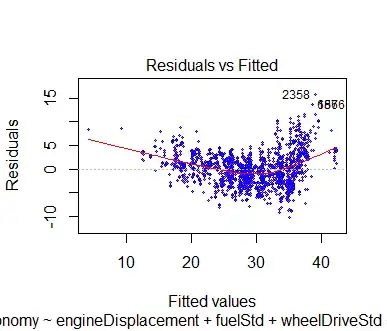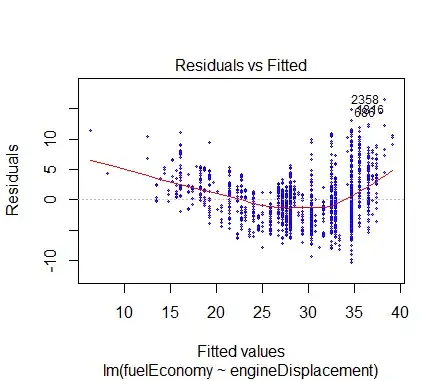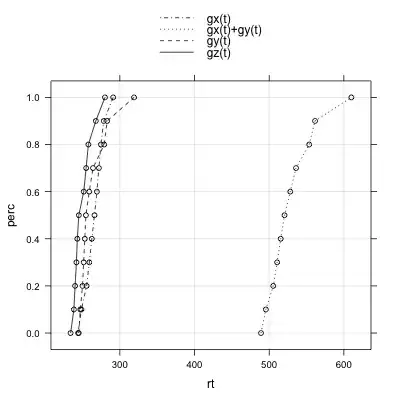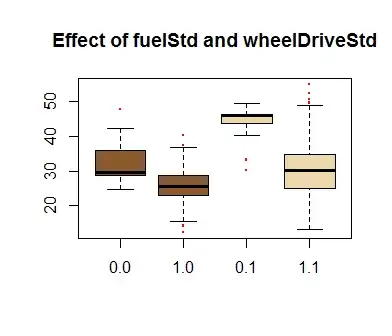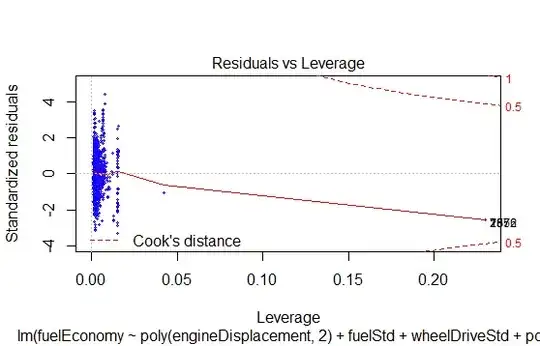I want to regress the fuel economy on engine displacement, fuel type, 2 vs. 4 wheel drive, horsepower, manual vs. automatic transmission, and the number of speeds. My data set (link) contains vehicles from 2012-2014.
fuelEconomyin miles per gallonengineDisplacement: engine size in litersfuelStd: 1 for gas 0 for dieselwheelDriveStd: 1 for 2-wheel drive, 0 for 4-wheel drivehp: horsepowertransStd: 1 for Automatic, 0 for manualtransSpeed: Number of speeds
R-code:
reg = lm(fuelEconomy ~ engineDisplacement + fuelStd + wheelDriveStd + hp +
transStd + transSpeed, data = a)
summary(reg)
Call:
lm(formula = fuelEconomy ~ engineDisplacement + fuelStd + wheelDriveStd +
hp + transStd + transSpeed, data = a)
Residuals:
Min 1Q Median 3Q Max
-10.2765 -2.3142 -0.0655 2.0944 15.8637
Coefficients:
Estimate Std. Error t value Pr(>|t|)
(Intercept) 48.147115 0.542910 88.683 < 2e-16 ***
engineDisplacement -3.673549 0.091272 -40.248 < 2e-16 ***
fuelStd -6.613112 0.403989 -16.370 < 2e-16 ***
wheelDriveStd 2.778134 0.137775 20.164 < 2e-16 ***
hp -0.005884 0.001008 -5.840 5.86e-09 ***
transStd -0.351853 0.157570 -2.233 0.0256 *
transSpeed -0.080365 0.052538 -1.530 0.1262
---
Signif. codes: 0 ‘***’ 0.001 ‘**’ 0.01 ‘*’ 0.05 ‘.’ 0.1 ‘ ’ 1
Residual standard error: 3.282 on 2648 degrees of freedom
(1 observation deleted due to missingness)
Multiple R-squared: 0.7802, Adjusted R-squared: 0.7797
F-statistic: 1566 on 6 and 2648 DF, p-value: < 2.2e-16
- Are the results realistic or am I doing something wrong here as most of the variables are highly statistically significant?
- Are other models better to use for this purpose?
- Is such a result usable for interpretation?

